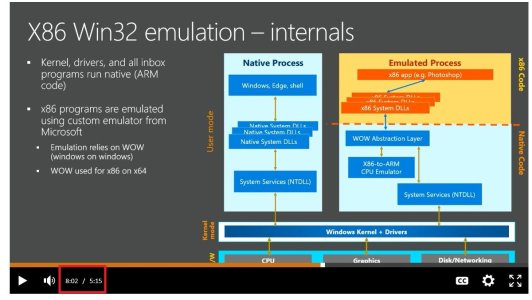Yeah that's how I would expect this to operate, because its caching - which is why every time we've seen this demo'd the application is either pre-installed, or something light and repeatitive (7zip). Presumably it'll take disk space and ram space, the more win32's you run too.
What they said in the video was basically "near native speeds depending on how much is executed on the native side versus the emulated side". So its going to depend on how much OS dll calls there are, and how well the code can be cached, whether that function has been previously caches, as to how close it can get to that 70% ish mark.
Which would explain why they executed a single filter in photoshop (presumably pre-executed).


